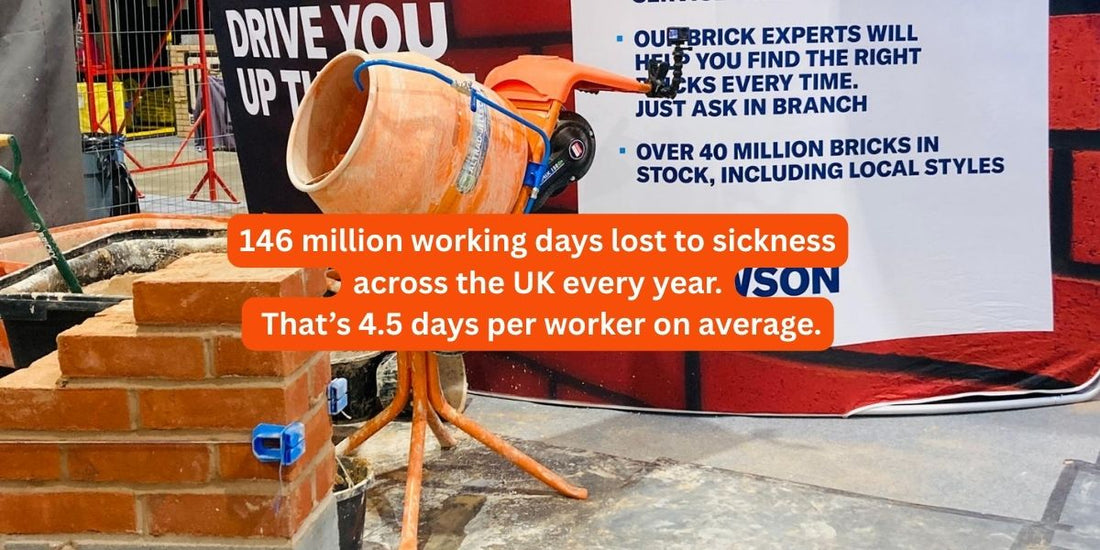
The Hidden Price of Sickness in Construction, And What You Can Do About It
When you think about construction, you think of strength, skill, and resilience. But behind the scaffolding and steel, there’s a health crisis that too often goes unnoticed. Sickness absence in the construction sector is higher than the UK average, costing time, money, and sometimes entire projects.
The Scale of the Problem
Across the UK workforce, around 146 million days are lost every year to sickness, about 4.5 days per worker. Construction is hit even harder. Musculoskeletal disorders, stress, and injury are some of the biggest contributors, and they account for thousands of lost hours on site.
The reality is that building work is physically demanding. Lifting, bending, mixing, carrying, repeat that day in, day out, and the strain soon takes its toll. Add to that the pressures of deadlines, site safety, and long hours, and it’s no surprise that absence rates in construction often outpace the national average.
The True Cost
Every sick day comes with a price tag. Employers face the immediate cost of sick pay and replacement labour, but there are hidden costs too.
Delays to schedules as tasks go unfinished.
Reduced quality if teams are stretched and rushing.
Increased risk as tired or understaffed crews try to keep pace.
Lower morale as others take on extra load.
For small firms and sole traders, even a single absence can put a project in jeopardy. For larger contractors, the cumulative effect runs into millions.
Why Tools and Practices Matter
While some health issues are unavoidable, many are made worse by inefficient ways of working. Using the wrong tools, or relying on outdated practices, piles unnecessary strain onto the body.
Consider the simple act of mixing. Repeatedly bending down to fill a drum with water from buckets or hoses puts pressure on the back and joints. Multiply that over a day, a week, a year, and the cumulative damage is significant. Small tasks that seem harmless can add up to chronic injuries.
Investing in tools and smarter site practices doesn’t just make jobs faster, it makes them safer. Ergonomic equipment, better lifting techniques, and site layouts that reduce strain all contribute to keeping workers healthier for longer.
Building a Healthier Culture
Tackling sickness in construction isn’t only about equipment. It’s also about culture. Encouraging breaks, reducing stigma around mental health, and training teams in safe practice all help cut absence.
Companies that actively invest in their people, through both health support and better tools, often see:
Lower turnover of skilled staff.
Fewer accidents and injuries.
Improved morale and productivity.
The Long-Term Payoff
It’s tempting to focus on upfront costs, but the savings from healthier teams are clear. Even a small reduction in sick days across a workforce translates into significant gains in productivity and reduced project delays. For sole traders, avoiding a back injury or repetitive strain can mean the difference between steady income and weeks without work.
Taking Action
Health and safety in construction has always been about more than compliance. It’s about ensuring that the people who build our homes, schools, and infrastructure can do their jobs without sacrificing their wellbeing.
That’s why investing in the right tools is worth it. Even something as simple as a water-feeding attachment for mixers can reduce strain, speed up work, and cut down on the small injuries that lead to bigger problems.
At the end of the day, healthier builders mean stronger businesses, and stronger buildings.
